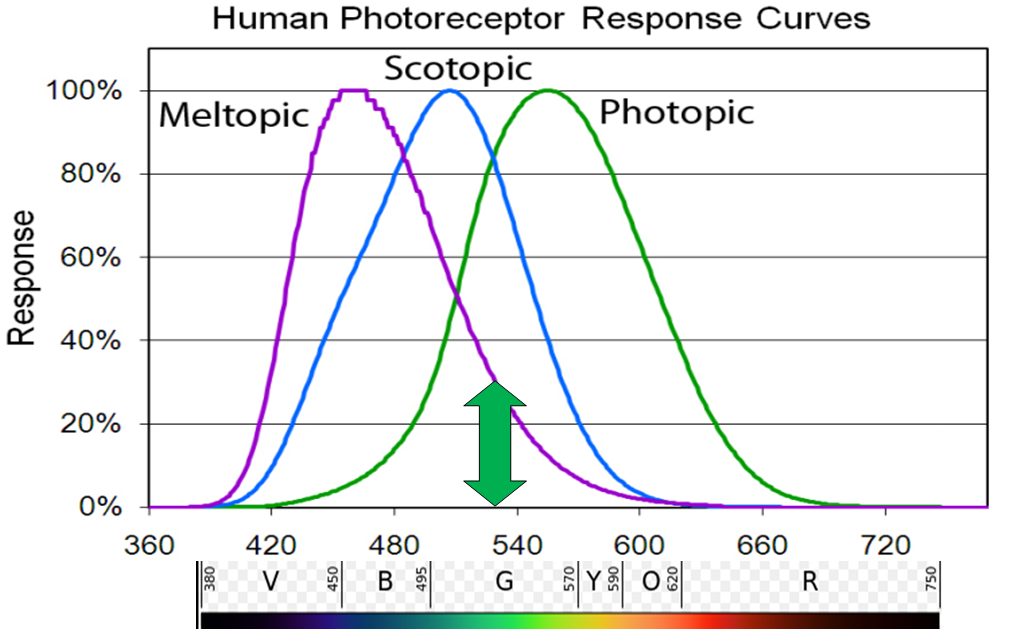
MAIN MENU scroll down to read ABOUT MY TRANSFORMATION
- ABOUT my transformation
- VIDEO TESTIMONIALS Light-Hygiene
- NEWS and EVENTS about Light For Fitness
- OUR EFFORTS toward Research
- BLOG Posts and Comments
- SCIENTIFIC PAPERS (Doubt? Read!)
- EXPLANATIONS OF TECHNICAL TERMS
- how to use – MELATONIN ONSET EYEWEAR – simple plan
- WHY?
- Why use our melatonin onset eyewear?
- Can I just turn off the BLUE PIXELS and skip wearing the orange glasses? NOPE!
- LINKS
- BUY! ENTER STORE FRONT DOOR LightForFitness.biz
- PRIVACY POLICY
Can I Just Turn Off the Blue Pixels and Skip Wearing the Orange Glasses? Nope!
No, why not?
The green pixels on your cell phone, computer and TV screen can also suppress and delay melatonin onset and thus cause circadian disruption.
My new cell phone comes with an app that automatically turns off the blue pixels in-between the times of sunset and sunrise. I appreciate this app because I don’t want the blue pixels firing while I am answering a call at night BUT if I were to spend anytime more than mere seconds looking at that screen at night, I would only do so while wearing LightForFitness Orange Eyewear, because the green pixels on that screen will cause circadian disruption.
A very helpful paper was written: Spectral Identification of Lighting Type and Character.
In this paper there is a graph which I borrowed and placed below.

I added to this graph an arrow (the bold green up-down double arrow) and also I added the ‘rainbow” color spectrum, so wavelengths in nanometers can be readily understood as commonly recognized color names (such as red, orange, etc.) for the sake of persons who are not familiar with light colors when they are expressed as wavelengths from 360 nanometers to 720 nanometers.
What this graph is simply stating is that the human eye DAY-TIME vision system (see the Photopic curve shown in green) experiences the color yellowish-green (approximately @ 555 nm) as the brightest color. This curve further illustrates the Photopic (day-time) eye sensitivity to all the other wavelength colors RELATIVE to its peak sensitivity to the color yellowish-green 555 nm.
This graph is also stating that the human eye NIGHT-TIME vision system (see the Scotopic curve shown in blue) experiences the color blueish-green (approximately @ 515 nm) as the brightest color. This curve further illustrates the Scotopic (night-time) eye sensitivity to all the other wavelength colors RELATIVE to its peak sensitivity to the color blueish-green 515 nm.
Most important for this conversation, this graph is also stating that the human eye subconscious non-vision system (see the Meltopic curve shown in violet) experiences the color blue (approximately @ 460 nm) as the most stimulating color. This curve further illustrates the Meltopic (circadian rhythm) eye sensitivity to all the other wavelength colors RELATIVE to its peak sensitivity to the color blue 460 nm.
Note: the Meltopic system is not a “camera function” of the eye, it is the “clock function” of the eye, and therefore contributes almost nothing to conscious sight in normal healthy eyes other than driving the steady-state pupil response. (Click to read the newer research that suggests that the Meltopic response is enhanced by green light). This clock function of the eye “sets the hands” of the clock function of the brain-melatonin-body repair-system.
One obvious take away from this above Meltopic curve is that: any color-wavelength can cause circadian disruption if it is bright enough and is endured long enough, even red light, the second least circadian disruptive color for humans. (Violet is the least disruptive and also possibly even anti-disruptive).
The GREEN PIXELs on your cell phone and computer and TV screen are bright mid-green 530 nm light emitters. (This mid-green color wavelength was chosen by engineers to optimize color gamut, NOT TO PRESERVE MELATONIN ONSET.) I marked that mid-green 530 nm color wavelength point on this graph’s wavelength scale, with the bold green up-down arrow.
The purpose of this arrow is to highlight that the 530 nm mid-green color wavelength (which is strongly emitted by green pixels) intersects approximately on the 30% response point of the Meltopic (circadian rhythm) curve.
A 30% response is significant to the Meltopic system (circadian rhythm); thus turning off the blue pixel light emitters on a screen is only a partial solution. The mid-green pixel light emitters which spectral outputs are engineered to center on or very near to 530 nm mid-green, are also like the Blue Pixels in that both colored pixels, blue and mid-green, are significantly Meltopic-circadian-rhythm affecting light emitters.
The LightForFitness Orange lens eyewear blocks 99.9859% of 530 nm mid-green light. Click here to see this demonstrated in a video.
Protect your circadian rhythm MORE COMPLETELY. DO NOT TRUST THE BLUE PIXEL REDUCTION APPs TO PRESERVE MELATONIN ONSET.
To see a laser video demonstration of how POORLY the inexpensive Uvex SCT Orange lens safety eyewear blocks mid-green, click here.
To understand a greater detailed explanation of the light blocking abilities of the Uvex SCT Orange lens safety eyewear when compared against the LightForFitness Orange Lens eyewear, click here.
To buy LightForFitness Orange lens eyewear, click here.
MAIN MENU scroll down to read ABOUT MY TRANSFORMATION
- ABOUT my transformation
- VIDEO TESTIMONIALS Light-Hygiene
- NEWS and EVENTS about Light For Fitness
- OUR EFFORTS toward Research
- BLOG Posts and Comments
- SCIENTIFIC PAPERS (Doubt? Read!)
- EXPLANATIONS OF TECHNICAL TERMS
- how to use – MELATONIN ONSET EYEWEAR – simple plan
- WHY?
- Why use our melatonin onset eyewear?
- Can I just turn off the BLUE PIXELS and skip wearing the orange glasses? NOPE!
- LINKS
- BUY! ENTER STORE FRONT DOOR LightForFitness.biz
- PRIVACY POLICY